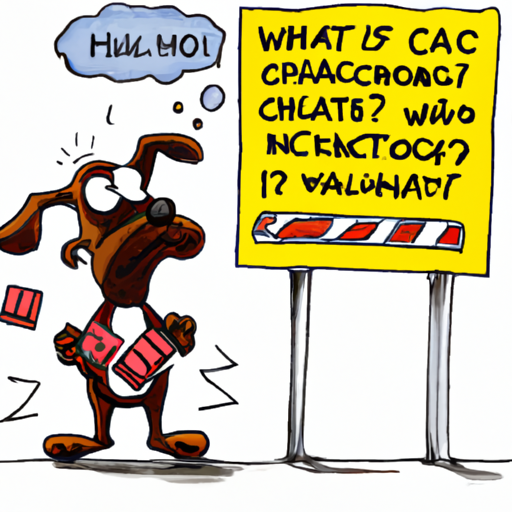Introduction
You may be a dog lover who cannot resist those pleading eyes begging for a piece of your chocolate bar. But, before you give in to that adorable face, it’s crucial to understand the dangers of dogs consuming chocolate.
The Danger of Chocolate to Dogs
Chocolate poses a severe threat to dogs. The primary culprits are theobromine and caffeine, two stimulants that dogs process far more slowly than humans.
These substances can cause:
- Nervous system malfunction
- Increased heart rate
- Seizures
A dog’s size, overall health, and the type and amount of chocolate consumed play significant roles in how the dog’s body reacts. Even a small amount of chocolate can make a dog ill.
Recognizing Chocolate Poisoning Symptoms
You have a critical role to play in spotting the symptoms of chocolate poisoning in your furry friend before it’s too late. The quicker you recognize the signs, the quicker your dog can receive the necessary treatment. Here’s what you need to look out for:
- Restlessness: Your dog may seem unusually agitated or hyperactive.
- Excessive Thirst: They may drink far more water than usual.
- Vomiting: There might be traces of chocolate in their vomit.
- Diarrhea: Their stool may become loose or unusually frequent.
- Rapid Breathing: They may pant heavily even when not exerting themselves.
- Seizures: These can be a sign of severe chocolate poisoning.
What to Do If Your Dog Eats Chocolate
If your dog has ingested chocolate, it’s essential to respond swiftly and correctly. Here are the steps you should take:
- Don’t Panic: Panicking can cause your dog to become anxious and exacerbate the situation.
- Remove any remaining chocolate: Make sure your dog doesn’t consume any more of the harmful substance.
- Call your vet: Provide them with as much information as possible, such as the type of chocolate, the amount consumed, and any symptoms you’ve noticed.
| Action | Do’s | Don’ts |
|---|---|---|
| Don’t Panic | Stay calm and collected | Don’t freak out |
| Remove Chocolate | Ensure no more can be consumed | Don’t leave chocolate within reach |
| Call Vet | Give detailed information | Don’t downplay the situation |
Preventing Chocolate Consumption in Dogs
Your role as a caregiver isn’t just to react when things go wrong; prevention is always better than cure.
- Store chocolate securely: Make sure chocolate is stored in a place your dog can’t access.
- Educate your family: Ensure all family members understand the dangers of feeding chocolate to dogs.
- Have dog-friendly treats: Having alternative treats can help meet your dog’s craving for sweets without the health risks.
Frequently Asked Questions (FAQs)
Q: Can a small amount of chocolate kill a dog?
A: The amount of chocolate that can harm a dog depends on the size and breed of the dog and the type of chocolate. It’s best to avoid giving any chocolate to your dog.
Q: What if my dog only licked a small amount of chocolate?
A: While small amounts might not cause severe poisoning, it’s still essential to monitor your dog for any symptoms and consult your vet if needed.
Q: How long after eating chocolate will a dog get sick?
A: Symptoms of chocolate poisoning can appear within 6 to 12 hours after your dog has eaten chocolate. It’s crucial to monitor your dog during this period.
Q: Can dogs recover from chocolate poisoning?
A: Yes, with prompt and appropriate treatment, dogs can recover from chocolate poisoning. Always consult your vet if you suspect your dog has ingested chocolate.



